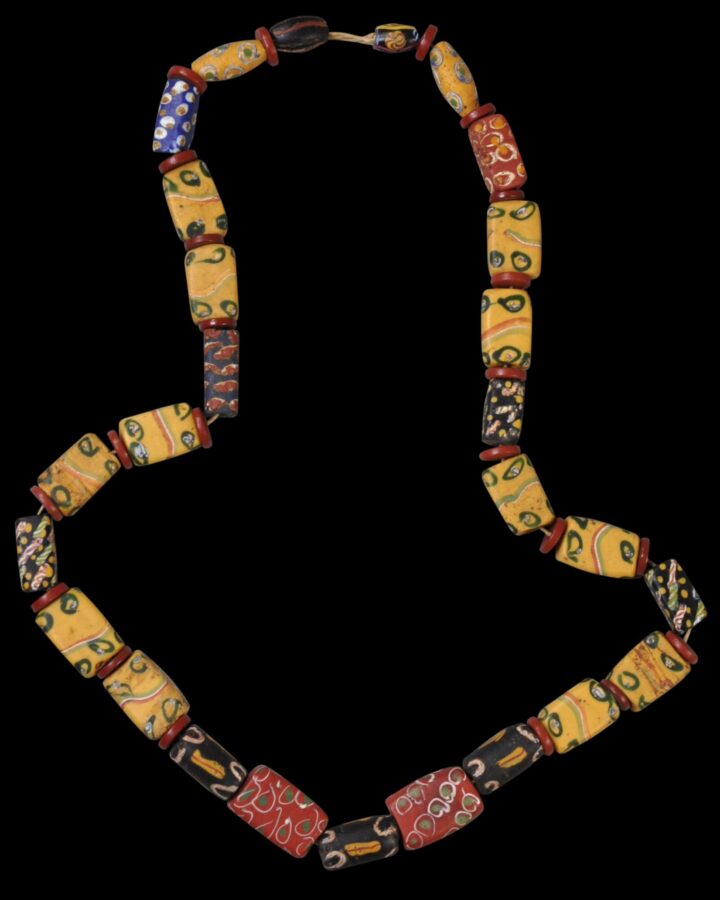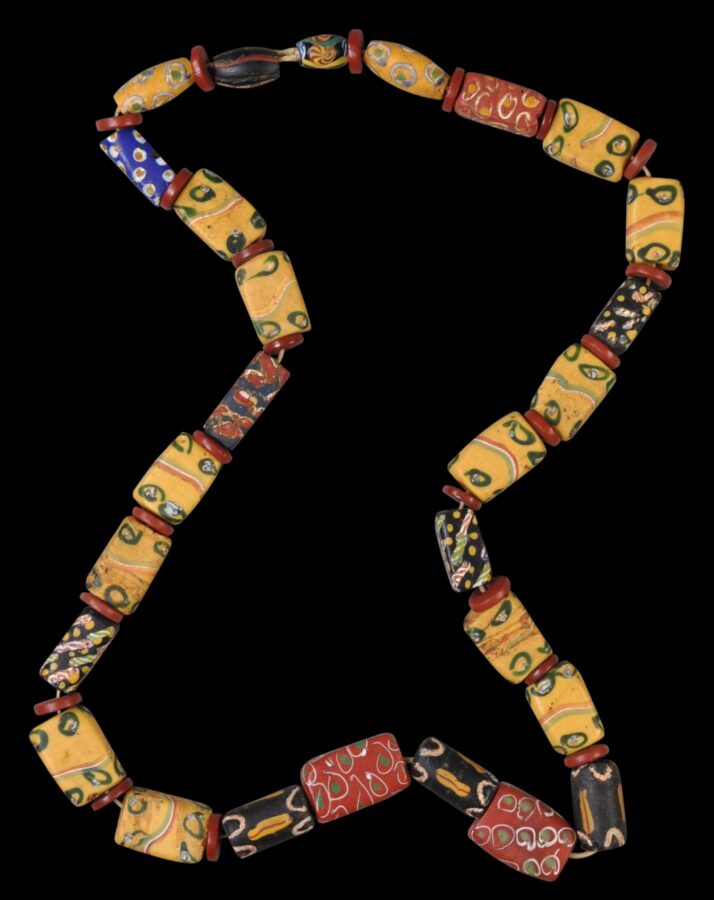Enquiry about object: 9841
Venetian Lampwork Tabular Trade Beads for the African Market
Venice for the colonial African market circa 1870
circumference: approximately 53cm, weight: 91g
Provenance
private collection, Canada. The collection was carefully assembled over the last 50 years.
This strand of multi-coloured glass trade beads, mostly yellow-ground tabular in type, is from Venice, and dates to around 1870. The strand includes a variety of cylindrical beads from the same period.
Such beads typically were made for export to colonial African markets. To satisfy local African demand, the Venetian beadmakers imitated bead types then produced in Africa such as glass bodom beads, which typically were yellow in colour.
The strand includes three black cylindrical beads of a type we have not seen before, nor which we have found to have been published.
Yellow-ground beads were preferred by the Ashanti of Ghana because of their similarity to gold, which was the colour of royalty. The area was also a significant gold producing region.
Beadmakers in Venice would soften drawn glass canes with heat from lamps (hence the term ‘lamp work’) and wind and draw the glass around thin iron rods. Motifs and patterns could then be achieved around the rod, which once removed would leave a hole in the bead so that the bead then did not need to be drilled. It is believed that initially, the Venetian beadworkers modelled their bead designs on early Islamic beads from the Middle East.
One bead has some damage, but the remaining beads are all in fine condition.
References
Panini, A., Middle Eastern and Venetian Glass Beads: Eighth to Twentieth Centuries, Skira, 2007.





